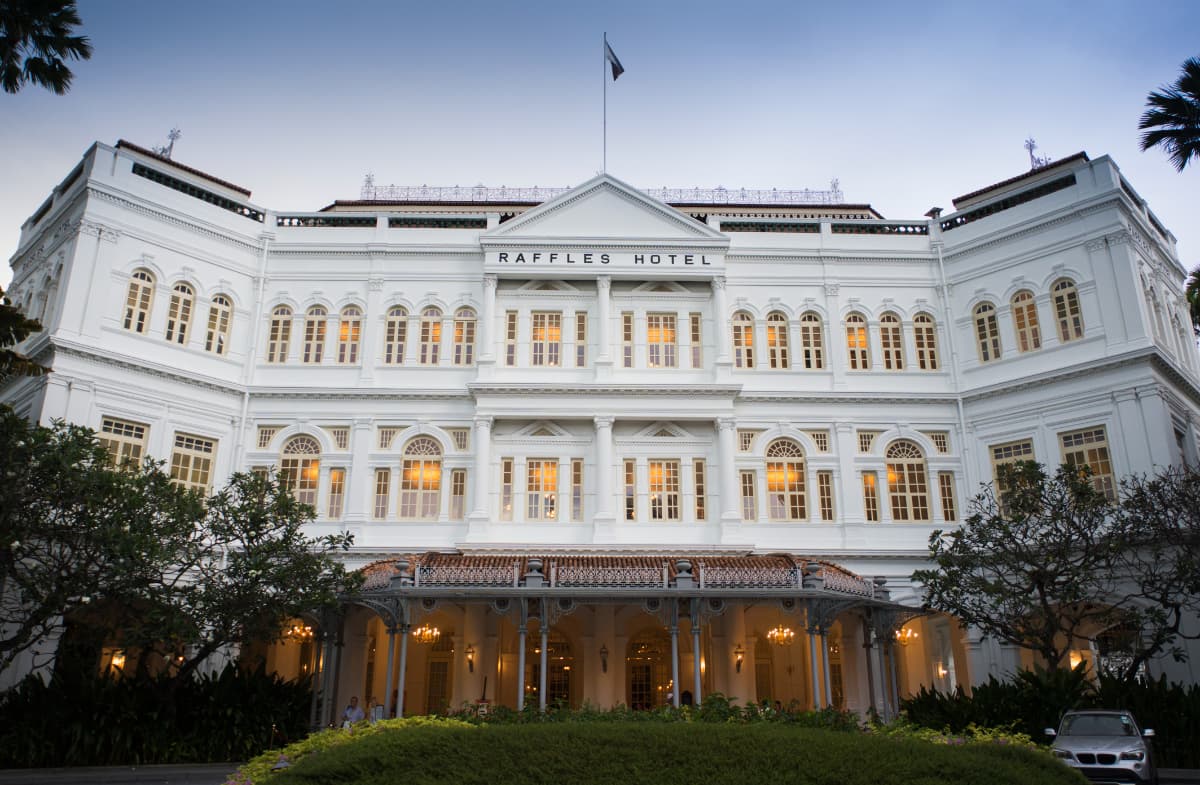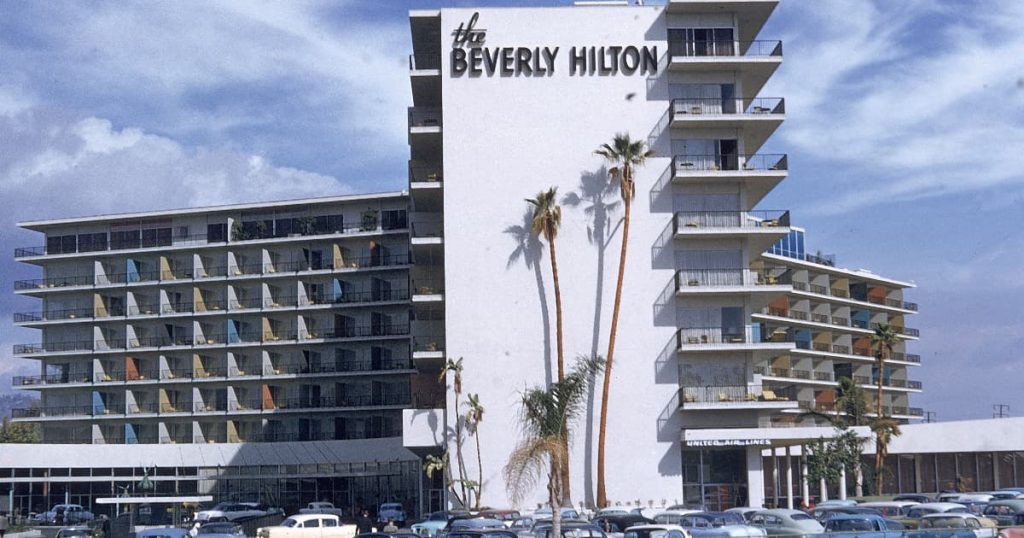Inside the largest hotel chains in the world
22nd August, 2024

With 187,000 accommodation businesses worldwide in 2023, the hotel industry experienced significant growth leading up to 2024. This growth was driven by the rise in international travel, technological innovations and changing consumer preferences. Major chains have responded to this by expanding their portfolios, embracing innovative guest experience strategies and adapting to new market trends.
Whether you want to build a career in the hotel industry or are looking to implement the best practices they deploy in your current role, these leading brands offer valuable insights into how to succeed. By studying their approaches, you can gain a competitive edge, matching your work with trade standards and trends.
Leading chains by number of guestrooms
To begin analyzing the world’s top hotel businesses, let’s first look at how hotels with the most guest rooms approach their business.
Marriott International: the leader in guest room availability
With many properties and millions of rooms, this chain stands at the forefront of the hospitality industry. Marriott boasts more than 1.5 million rooms spread across upwards of 30 brands worldwide. This expansive reach reinforces Marriott’s dominant market position and shows its ability to cater to a broad clientele, ranging from luxury travelers to budget-conscious guests.
The acquisition of Starwood Hotels & Resorts in 2016 bolstered Marriott’s room count while also integrating prominent brands such as Sheraton, Westin and St. Regis into its portfolio. Marriott’s large number of guest rooms supports its strong loyalty program, Marriott Bonvoy, which uses its many properties to offer a wide range of rewards and benefits. This helps Marriott keep high occupancy rates and boosts its competitive edge in key markets worldwide.

Hilton Worldwide: strategic positioning and market impact
As one of the most recognizable names in the hotel world, Hilton holds a formidable position in the global hospitality industry. It boasts a portfolio of more than 1.1 million rooms across upwards of 6,500 properties in 119 countries. Hilton’s strategic focus on organic growth and franchising has enabled it to expand its footprint efficiently. Brands such as Hilton Hotels & Resorts, DoubleTree and Hampton by Hilton cater to a wide array of market segments, ensuring broad appeal.
Hilton’s innovative hospitality digital marketing strategies and commitment to innovation, exemplified by the Hilton Honors loyalty program and the introduction of digital key technology, have solidified its reputation for guest convenience and satisfaction. The company’s emphasis on franchising reduces operational risks while accelerating growth, allowing Hilton to maintain a strong competitive position against its rivals. This strategic approach ensures sustained expansion and a consistent increase in its room inventory, reinforcing Hilton’s status as a prominent industry player.
InterContinental Hotels Group: expansion through multiple brands
This hotel chain – commonly known as IHG – operates approximately 912,000 rooms across nearly 6,000 properties globally. Its portfolio includes well-known brands such as InterContinental, Crowne Plaza, Holiday Inn and Kimpton Hotels. IHG’s growth strategy focuses on leveraging its strong brand equity and expanding its upscale and luxury segments. The launch of new brands such as Avid Hotels and the acquisition of Kimpton Hotels highlight IHG’s efforts to diversify its market presence. Additionally, the IHG Rewards Club loyalty program plays a critical role in driving guest retention and direct bookings, further solidifying its competitive edge.
Leading chains by number of properties
Assessing the top hotel businesses by their property count can also give valuable insights into their effective growth and high-end marketing strategies. Let’s take a look at some of the brands with the highest property numbers.
Wyndham Hotels & Resorts: the top player by property count
In terms of property numbers, this brand is the clear leader. Its extensive network spans a broad range of different hotel types and brands, including Super 8, Days Inn and Ramada, primarily targeting the economy and midscale segments. Wyndham’s strategic focus on franchising has enabled rapid and scalable expansion, allowing it to penetrate a wide array of markets efficiently. The company’s robust franchise model reduces operational risks and capitalizes on local market knowledge, making it a formidable player in established and emerging markets. Wyndham’s comprehensive loyalty program, Wyndham Rewards, further boosts its appeal by offering valuable perks and building loyal customers across its vast portfolio.
Choice Hotels International: economy at scale
Focusing primarily on midscale and economy segments, Choice Hotels International manages approximately 7,000 properties. Their brands include Comfort Inn, Quality Inn and Econo Lodge. Its strategic emphasis on franchising and domestic growth in the US has enabled it to maintain a strong presence in its target market sections. The company’s commitment to innovation, evidenced by its Choice Privileges loyalty program and investment in technology, supports efficient operations and better guest experiences. By concentrating on its chosen areas, Choice Hotels effectively meets the needs of cost-conscious travelers while ensuring steady growth and profitability.
Professionals looking to develop a career with one of the leading chains should recognize the need to be appropriately qualified. On-the-job training can only go so far and investing in your professional development through a hospitality degree can improve your prospects.
With our industry-leading courses and opportunities for great internships, you can kick-start your career towards managing the largest hotels

Financial performance and market presence
According to the 2024 Brand Finance Hotels 50, many top companies saw minimal brand value growth over the past 12 months or slight declines compared to previous years. While Marriott International (MAR) climbed to fourth place, Hilton (HLT) maintained its reign as the most valued hotel group for the ninth year. This slowdown reflects the ongoing challenge of keeping pace with the initial post-pandemic surge in travel demand.
Global trends significantly impacted hotel chains’ financial health and operations. The leisure and tourism sector is experiencing a resurgence, with eight out of the top 10 entries in the Brand Finance report showing brand value growth, indicating a rise in recreational traveling. However, business travel, which typically generates higher revenue per guest, has yet to fully recover. To adapt, some companies are focusing on attracting remote workers and offering flexible meeting spaces to cater to the evolving needs of travelers.
Geographic distribution and market influence
The world’s leading hotel chains have established a vast presence, catering to travelers across the globe. Let’s explore the regional distribution of the top brands.
North America
This region remains a dominant market for the leading four chains, with a strong concentration of properties in the United States and Canada. Hilton and Marriott boast the most extensive networks, leveraging their established brand recognition, while Wyndham capitalizes on its franchise model, catering to budget-conscious travelers. IHG, known for its diverse portfolio, offers a range of options from luxury (InterContinental) to midscale (Holiday Inn).
Europe
This mature market presents a competitive challenge. Marriott and IHG are well-established across major European cities, while Hilton follows closely, with a focus on business and leisure travelers. Wyndham’s presence is more limited and concentrated in select markets, focusing on luxury stays.
Asia
A region experiencing significant growth in the hospitality sector. All four leading chains are actively expanding their footprints here. Marriott leads the pack, particularly in China, while Hilton and IHG are also focusing on development here, catering to domestic and international travelers. Wyndham Hotels & Resorts has a strong presence in Southeast Asia, especially through its franchise model.
Emerging regions
Marriott and Hilton are at the forefront of expansion in markets such as Africa, the Middle East and Latin America. They leverage their brand recognition and experience in franchising to attract regional partners. IHG, with its diverse portfolio, is well-positioned to cater to the evolving needs of these locations. Wyndham, through its focus on franchising, has adapted its offerings to local tastes and budgets, making it a strong contender in these regions.
Market penetration strategies and regional adaptations
To maintain their influence, the leading hotel chains employ various approaches, such as:
- Franchise model: Wyndham and IHG heavily rely on franchising, allowing them to expand rapidly and cater to local preferences
- Brand portfolio: offering a diverse collection of hotel businesses, as IHG and Marriott do, enables them to cater to a wider range of consumer segments
- Localization: adapting offerings to regional preferences, such as halal menus or business amenities in Asia, is key to success
- Digital presence: investing in strong online platforms for booking and marketing is essential for attracting digital-savvy global travelers
Industry challenges and competitive dynamics
As travel rebounds after the pandemic, leading hotel chains still face obstacles. While economic fluctuations remain a concern, the current focus is on adapting to how traveling has evolved.
One key challenge is the changing nature of travel. Leisure trips are booming, with pent-up demand driving bookings. However, business recovery is still lagging, impacting overall revenue for some chains. To address this, these leading hotel companies are developing strategies to attract remote workers and offering flexible meeting spaces that cater to shorter corporate trips.
Competition also remains fierce. Alternative accommodations such as vacation rentals and boutique hotels continue to gain traction, particularly among younger travelers. Leading chains are responding by emphasizing brand loyalty programs and personalized guest experiences driven by technology. Sustainability is also becoming a key differentiator. Implementing eco-friendly practices and energy-efficient measures attracts environmentally conscious customers and aligns with growing industry trends.
Conclusion
The global hotel industry is a complex and ever-evolving ecosystem. Leading chains such as Marriott International, Hilton Worldwide, IHG Hotels & Resorts and Wyndham Hotels & Resorts have managed a period of significant change, adapting to a post-pandemic economy and capitalizing on an upsurge in leisure travel.
By analyzing these giants through various lenses, we gain valuable insights, such as how Marriott leverages its extensive portfolio to cater to a diverse clientele while Hilton prioritizes organic growth and franchising for global spread. IHG focuses on brand equity and diversification, while Wyndham dominates the budget-conscious segment with its robust franchising model. Examining property count reveals Wyndham’s vast network, while Marriott’s strategic acquisitions have bolstered its brand collection and international reach.
If you want to work in some of the largest hotels, it’s vital to learn all you can about the strategies that these major hotel chains use. For aspiring professionals, earning a degree in hospitality management strengthens your knowledge base and increases your career prospects.
Main Image: Walter Bibikow / Stone via Getty Images




